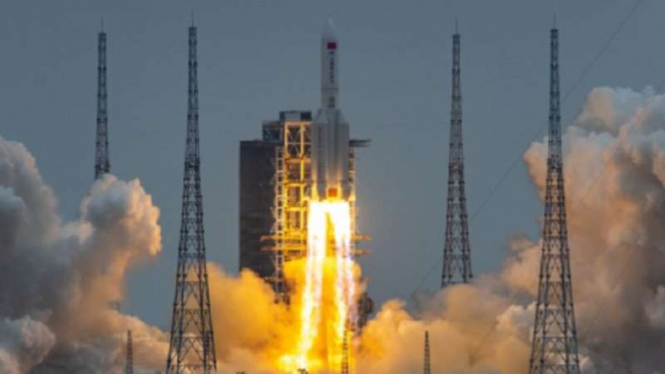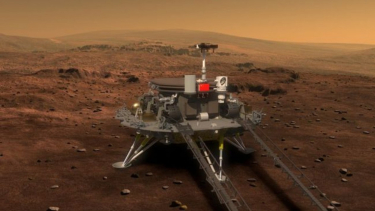Scientists from China Find Hydrated Minerals on Mars
- VCG /Getty/Kyodo
VIVA – According to a report from a state-run media network. The China National Space Administration or CNSA has revealed new data from the Mars orbiter Tianwen 1 and the rover Zhurong Mars.
On July 23, 2020, Tianwen 1 along with the lander Zhurong reached Mars orbit on February 10, 2021, where the orbiter had been operating for nearly 800 days.
As launched from the Space site, on September 21, 2022, the rover and lander reached the surface of Mars three months later, and this rover has already crossed 6,302 feet (1,921 meters).
China Global Television Network reports, that it has announced that orbiters and rovers have sent back 1,480 GB of raw data, some of which supports the hypothesis that ancient oceans once existed in Utopia Planitia, the vast Martian plain that Zhurong explores.
Tianwen-1 milik China.
- Space.com
Scientists analyzing the data have found the presence of hydrated minerals in the 'duricrust', a hard mineral layer above the soil that is usually formed due to the evaporation of groundwater.
They claim that this finding proves there has been substantial liquid water activity in the region, at some point over the last billions of years.
They have also determined that Martian soil has high bearing strength and low friction parameters which would indicate erosion due to wind, water, or both.
The hypothesis that oceans of liquid water once existed on Mars is not new as recent climate simulations have also shown the existence of such oceans. Scientists even discovered enormous underground ice deposits beneath Utopia Planitia years before Zhurong's arrival.
Both Tianwen 1 and Zhurong will continue to explore Mars for evidence of water. Both robots will also carry out other research.
CNSA says its scientists have studied the relationship between the density of rocks on the Martian surface and the rate of surface erosion, the distribution of ions and neutral particles in the Martian environment, and the red planet's gravitational field.





















